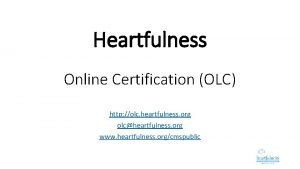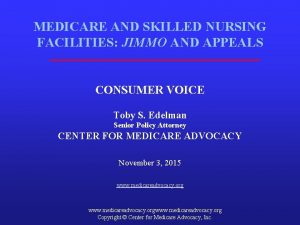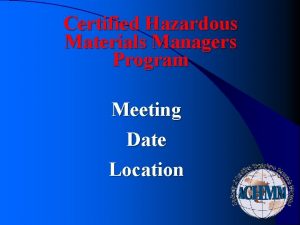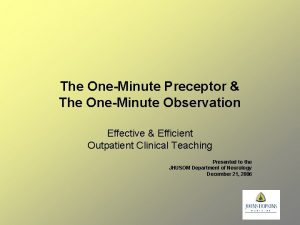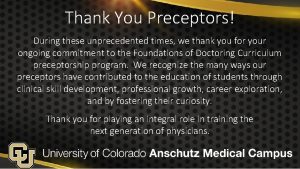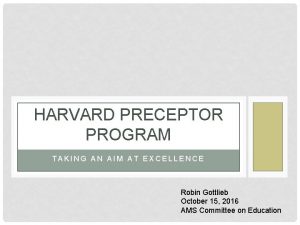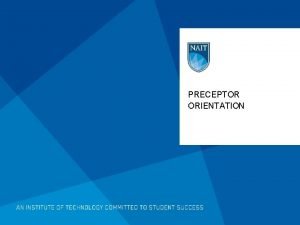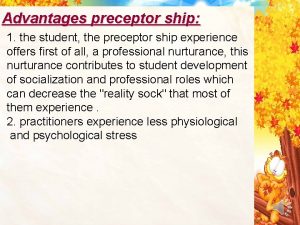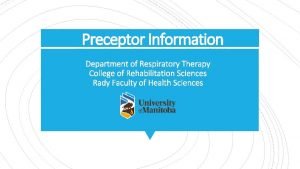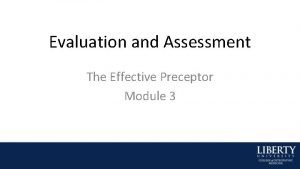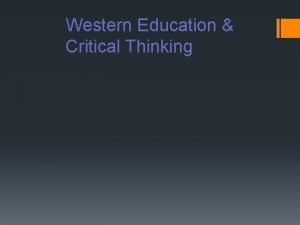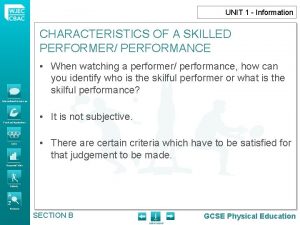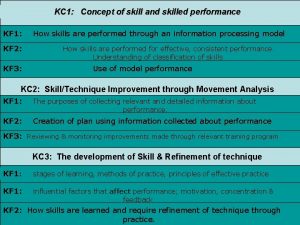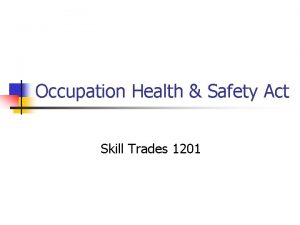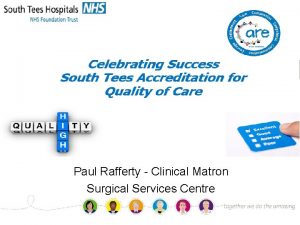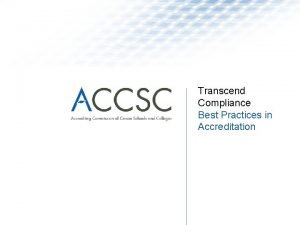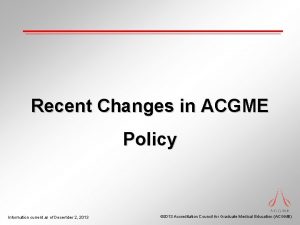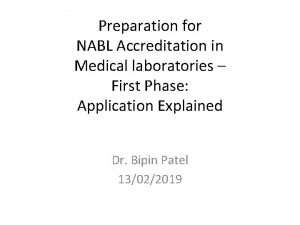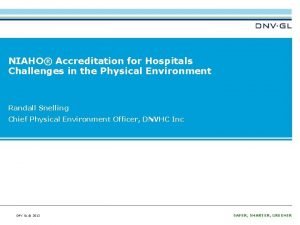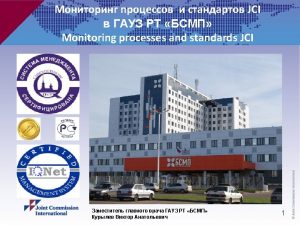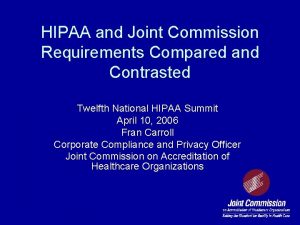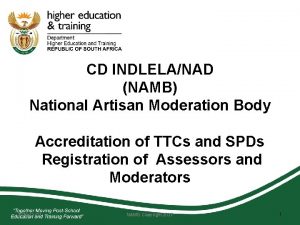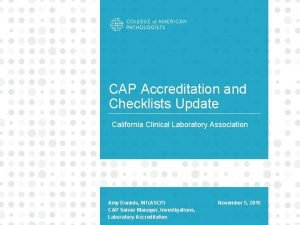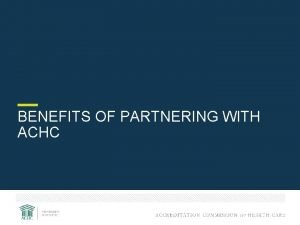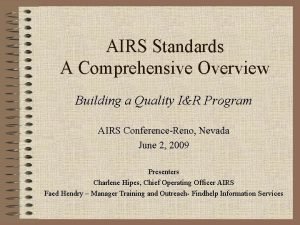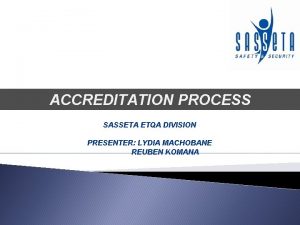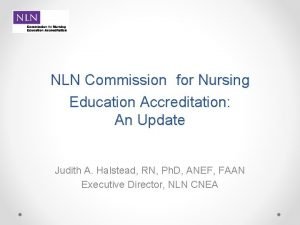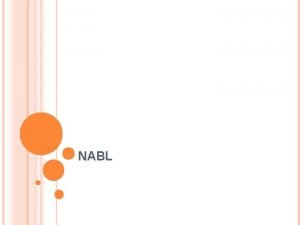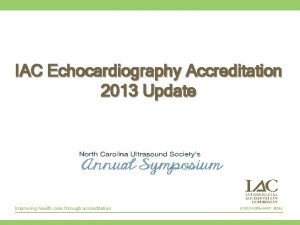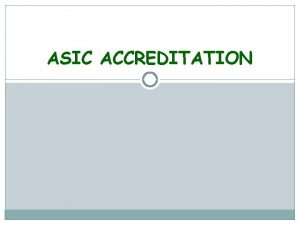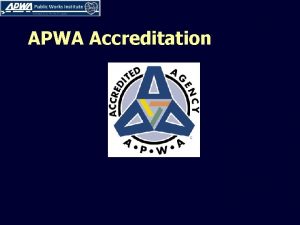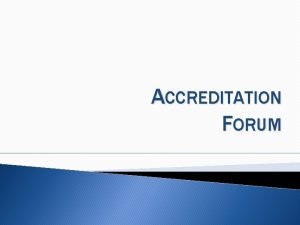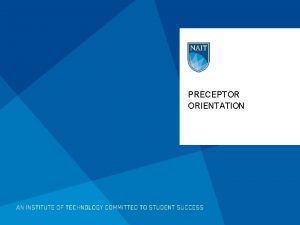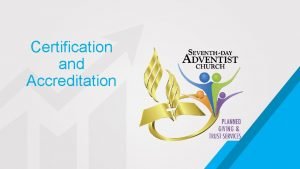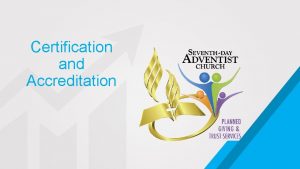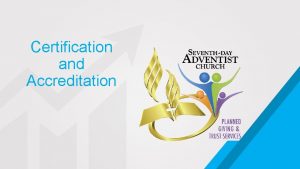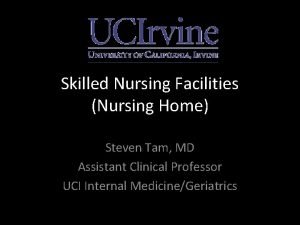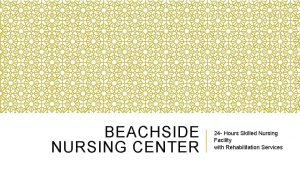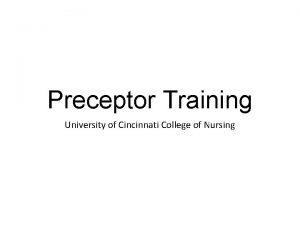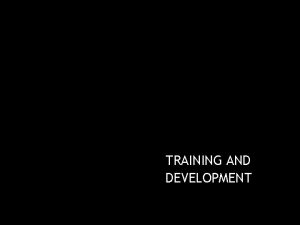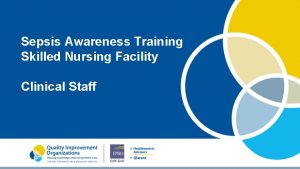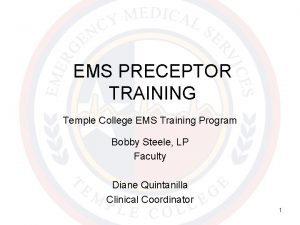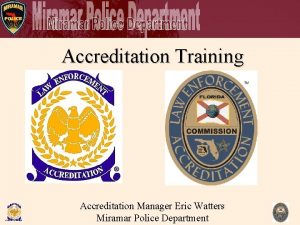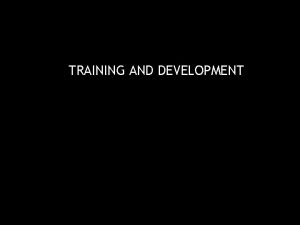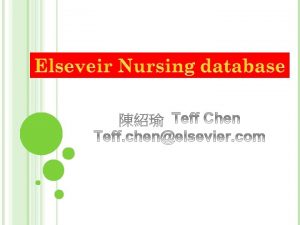Preceptor Development Training Skilled Nursing Unit Accreditation Information































































- Slides: 63

Preceptor Development Training Skilled Nursing Unit

Accreditation Information BAYADA Home Health Care is accredited as a provider of continuing nursing education by the American Nurses Credentialing Center’s Commission on Accreditation

Disclosure: Conflict of Interest • There is no conflict of interest with the Planners, Presenters, Authors, their spouses or significant others of this activity. • There is no conflict of interest with the Author of this activity. • This activity is not provided with any other organization. • BAYADA maintains full responsibility for the activity. Criteria for Successful Completion of Activity • Attend at least 85% of the activity (missing no more than 15 minutes). • A completed evaluation.

Our Mission BAYADA Way BAYADA Home Health Care has a special purpose—to help people have a safe home life with comfort, independence, and dignity. BAYADA Home Health Care provides nursing, rehabilitative, therapeutic, hospice, and assistive care services to children, adults, and seniors worldwide. We care for our clients 24 hours a day, 7 days a week. Families coping with significant illness or disability need help and support while caring for a family member. Our goal at BAYADA is to provide the highest quality home health care services available. We believe our clients and their families deserve home health care delivered with compassion, excellence, and reliability, our BAYADA core values.

Our Vision BAYADA Way With a strong commitment from each of us, BAYADA Home Health Care will make it possible for millions of people worldwide to experience a better quality of life in the comfort of their own homes. We want to build and maintain a lasting legacy as the world’s most compassionate and trusted team of home health care professionals. We will accomplish our mission and achieve our vision by following our core beliefs and values.

BAYADA Way Our Beliefs • We believe our clients come first. • We believe our employees are our greatest asset. • We believe that building relationships and working together are critical to our success as a community of compassionate caregivers. • We believe we must demonstrate honesty and integrity at all times. • We believe in providing community service where we live and work. • We believe it is our responsibility to strengthen the organization’s financial foundation and to support its growth.

Objectives: Upon completion of this program the learner will: • Understand the role of the preceptor and the new learner. • Define what a preceptorship is. • List the attributes of a preceptor. • Understand the importance of self-assessment. • Understand how to encourage and facilitate critical thinking in the new learner. • Discuss the importance of emergency preparedness. • Identify how to prepare the new learner for potential emergencies. • Identify strategies to assist new learners to develop critical thinking. • List 5 teaching methods. • Discuss the importance of competency assessment, evaluation, and methods for delivering feedback. • Understand preceptor requirements for documentation and communication.

Who are Preceptors? Experienced and competent home care nurses who have received formal training to serve as a resource and role model to nurses who are new to home care.

Who are Preceptees? • Recent graduates from an accredited school of nursing • Nurses who may have no experience with pediatrics • Nurses who may no experience with adult home health care • Nurses who require a refresher to update prior knowledge • Nurses who are advancing their skills • Eager learners who are adding practice to theory

What is a Preceptorship? A formal agreement to engage in a timelimited apprenticeship in a client’s home where the nurse can develop skills and demonstrate competency under the guidance of a designated preceptor.

In one sentence…… The primary job of the Clinical Preceptor is to add practice to theory of the new learner.

ATTRIBUTES OF A PRECEPTOR Knowledge Skills/Abilities Attitudes Client diagnosis Medication Infection control Client safety Emergency preparedness Home care etiquette Professional boundaries Documentation Policies and procedures Practice standards Adult learning principles Methods of teaching and learning Client assessment and care Psychosocial assessment Developmental assessment Critical thinking Communication Use of equipment Work organization Problem-solving Decision-making Priority-setting Professional Mature Respectful Realistic Patient Flexible Dependable Supportive, encouraging Positive Sense of humor Constructive


1 4 Evaluate your own knowledge of the client and family: • Do I fully understand the client’s diagnosis? Before you start… • Do I know al the medications, administration times and sequences? • Do I know all the treatments, adaptive devices and their rationales? “You can’t teach what you don’t know. ” • Can I operate and explain all the equipment? • Do I have helpful insights into the family dynamics? • Do I know how to maintain boundaries?

Self-Assessment • Client diagnosis • Medications • Nursing skills • Equipment • Zone Tool • Emergency preparedness • Documentation • Professional boundaries • Policy requirements • Nursing standards

Emergency Preparedness

CHANGE YOUR FOCUS Focus on predicting and preventing catastrophes rather than reacting to them! 17

Complacency vs Vigilance com·pla·cen·cy n. vig·i·lance n. ~a feeling of security, often ~ the action or state of keeping accompanied by unawareness careful watch for possible danger or of actual dangers or difficulties deficiencies 18

Activity Can anyone share a story of a situation they have encountered where either • You witnessed complacency and when the emergency arose, the nurse didn’t not respond appropriately. • You had an emergency yourself and because you were prepared, it went smoothly.

CONSIDER THIS…. Analysis of sentinel events reveal problems in the following areas: • Assessment • Competency • Physical Environment

HOW? ! • Know the client ü disease process ü baseline status • Anticipate potential emergencies • Know the plan ü emergency response ü ordered medications and treatments • Prepare the environment • Practice and encourage critical thinking

ENVIRONMENTAL ASSESSMENT Prepare the client’s environment as if you expect an emergency today ! • Is all equipment available, clean and in working order? Tested? • Are all medications, including oxygen, available? • Are all supplies available, labeled and organized • Are all orders current? • Do you have a functioning cell phone? A WORKMAN IS ONLY AS GOOD AS HIS TOOLS

CRITICAL THINKING Critical thinking is the ability to recognize problems and raise questions, gather evidence to support answers and solutions, evaluate alternative solutions, and communicate effectively with others to implement solution for the best possible outcomes. Critical thinking separates the professional from the technician.

To make accurate and appropriate clinical decisions Why Critical Thinking is Important To solve problems and find solutions To plan appropriate care for each client problem To seek knowledge and use it to make clinical decisions and problem solve To be able to think creatively when planning care for clients

WHAT RESEARCH REVEALS • 50% of novice nurses were involved in errors of nursing • 65% of the errors were due to poor clinical decision-making skills • 80% of employers are NOT satisfied with decision making skills of new graduates Knowing how to teach clinical judgement is important! Muntean, (2013) NCSBN

The Question: How can we enhance clinical judgement in nurses? The goal: For the nurse to understand the client’s diagnoses, recognize changes in the client’s condition, and know how to intervene. This training will help you realize this goal ….

Four Steps: Step one: Noticing: Asks the question: “What do you see? ” TANNER’S CLINICAL JUDGMENT MODEL Step two: Interpreting: Asks the question: “What does it mean? ” Step three: Responding: Asks the question: “What will you do? ” Step four: Reflecting: Asks the question: “What was the effect of your thinking? ”

NOTICING • Identifying signs and symptoms • Assessing systematically and comprehensively • Gathering accurate information • Predicting potential complications

Think about and question your knowledge base: • What do you know? • What do you need to know? Are there holes in your knowledge base? • What information do you need to find out to address the problem? • What do you need to review in a reference book to determine the significance of the data you are collecting? • What sources of information will you use? • Are there any monitors or alarms in place that provide information about the client’s condition? Do you need to learn about this equipment?

INTERPRETING • Clustering related information • Recognizing inconsistencies • Determining important information to collect • Distinguishing relevant from irrelevant information • Identifying assumptions

Putting it into action: During assessment of vital signs ask the learner: • Which vital signs are outside the normal limits? • Are these vitals acceptable? Why? • What parameters will you place on the vital signs and what readings will trigger action on your part? • What action will you take should the vital sings go outside the acceptable range for this client? 31

RESPONDING • Planning • Prioritizing • Managing potential complications • Communicating

REFLECTING • Evaluating client response to interventions • Evaluating and correcting thinking

Questions to Encourage Critical Thinking What are your main concerns with this situation? How does this assessment finding relate to the client’s diagnosis? How do you know this? What could go wrong here? What do you think you should do next? Why have you decided on this intervention? What is the rationale? What is confusing to you? How long can you wait to intervene? What will tell your interventions worked? Are you making assumptions that could be false? What task can wait until later? Who can assist you? How will you know when to call for help?

Critical Thinking “DON’TS” Abandon the use of logic. Critical thinking fails as a process when logic is not used. Ignore your biases. Critical thinkers examine their biases and do not allow them to compromise the integrity of their thinking processes. Be closed-minded. The close-minded individual ignores alternative points of view and may ignore input from experts and primary caregivers. “We have always done it this way”. Jump to conclusions and hasty generalizations without considering the evidence.

ACTIVITY You arrive at your client's home for your scheduled shift. Upon arrival you receive Tim asleep in bed. He has his AM G/T feeding in progress. He is easily arousable, but you notice that he is paler and more lethargic than normal. You also noticed that is breathing is labored. His respiratory rate is 36 and his hair is damp from sweating. You take his temperature and it’s 102. 4. When you listen to his lungs you hear wheezing throughout both lung fields.

TEACHING METHODS • Modeling • Interactive Modeling the Think Aloud Method” • Modeling • Interactive Modeling “Think Aloud Method” • Direct Questioning • Competency Based Assessments • Assigned Reading

MODELING Compassion. Excellence. Reliability.

INTERACTIVE MODELING THE THINK ALOUD METHOD • Allows the preceptor’s thoughts to be “visible” to the new learner. • Allows the new learner to think about why certain interventions are being done. • Promotes critical thinking.

DIRECT QUESTIONING • Modeling • Interactive Modeling the Think Aloud Method” • Should not be perceived by new learner as “grilling” • During client assessment and care can include questions such as: -What do you think? -Why do you think that? -What should we do? -Who should we call? • May be used to assess knowledge -What is the safe dose range for that medication with this client

ASSIGNMENTS • Homework • Review • Follow up

Competency Consists of Three Elements

43 Before meeting the new learner, ask yourself: PLANNING AND PREPARATION FOR PRECEPTING • Do I know what the new learner’s experience is? • Is the client and family prepared for a new learner? • Is the environment conducive to learning? • What are my teaching objectives, and goals for the new learner?

4 4 • Provide an organized tour of the home. PRACTICAL APPLICATION Learning Objective: The new learner will understand comfort and accommodation requirements in the home care environment. Water and Electrical sources. Food storage. • Specific household rules. Kitchen, bathroom, siblings, off-limit areas, and privacy expectations. • Traditional routines for the client. Entertainment, homework, bedtime. • Client’s likes and dislikes. • Cultural considerations Family traditions, food, faith.

Night Shift Precepting Tips • Discuss client diagnosis and baseline assessment findings • Use of scenarios to practice critical thinking and emergency preparedness • Equipment use and maintenance • Medication review • Treatments and interventions • Documentation review 45

4 6 Documentation • Client care provided by a nurse during training will be entered by that nurse on the appropriate client chart forms e. g. Nurse’s Note, Medication Profile / Treatment record, applicable Flow Sheets. • In addition to your Nurse’s Note for the shift, the nurse being trained will maintain an independent Nurse's Shift Note & Time Record which will be signed by you and submitted to the home office each week by the nurse in training. Please check the note for accuracy prior to signing. • Please document the name and title of the nurse you are training at the beginning of the narrative section of your Nurse's Note. i. e. Nancy Nurse, RN is present for training this shift. Please remember to document skills you observed being performed on the appropriate skills checklists!

Time Management for YOU! • Learn how to set priorities. • Know the importance of flexibility and patience. • Create the mental space to implement your time management skills by arriving early. • Take a break when you need it (and even if you don’t).

EVALUATION 48

4 9 Evaluation is Critical After each session take time with the new learner to evaluate: • What was hard? • What was scary? • What do you feel good about? • How are we progressing on the checklist? • Objective evaluation of performance

Providing Effective Feedback Continuous feedback allows preceptors to: • Motivate and positively reinforce learning • Diagnose the nature and extent of any problem areas • Offer constructive criticism when needed • Identify areas for remediation • Determine the effectiveness of the learning activities

Positive Feedback / Results for the new learner: üAffords feelings of success üEnhances motivation for learning üReinforces desired performance Guidelines For Providing Feedback Negative Feedback / Results for the new learner: üTends to discourage and demoralize üLimits or reduces motivation for learning üTends to focus on what not to do Constructive Feedback / Results for the new learner: üEnables him or her to experience at least partial success üMaintains motivation for learning üReinforces desired performance and corrects unsatisfactory performance

LEARNING IS OCCURRING IF THE NEW LEARNER: • Performs a thorough assessment • Responds appropriately to changes in the client’s status • Articulates sound decision making • Employs critical thinking to develop a plan of action • Is organized and time efficient • Is self confident but knows limits, asks for help • Interacts with the client in a caring manner • Provides concise clear documentation

Recognizing Red Flag Behaviors • Hesitant, anxious, defensive • Uneasy with client; misses client’s cues • Performs an incomplete assessment • Unable to explain rationale for treatments • Unable to discuss pathophysiology of involved disease processes • Unable, unwilling to perform demonstration of tasks • Unable to give a clear report to the next shift • Unable to document clearly • Professionalism is not present • BAYADA Way is not represented

Communication • When to communicate: • Any RED FLAG behavior • When you have questions or need support • With any concerns about the new learner’s progress • When a scheduled precepting date is not appropriate for the client • At the conclusion of the precepting experience

Documentation Toolbox

Professional Boundaries

PROVIDING CARE IN THE SCHOOL SETTING

BAYADA Way Activity Compassion Key result: Our clients and their families feel cared for and supported. Key actions: • Work with a spirit of universal faith, hope, and love. • Demonstrate exceptional care and kindness to others. Be led by our hearts. • Be respectful. Treat others the way they wish to be treated. • Listen closely, show empathy, and respond to the needs of others. • Be friendly. Let our smiles be seen and felt.

BAYADA Way Activity Reliability Key result: Our clients and their families can rely on us and are able to live their lives to the fullest, with a sense of well -being, dignity, and trust. Key actions: • Keep our commitments as promised. • Consistently deliver expected services. • Fulfill our clients 'needs promptly and thoroughly. • Be creative, flexible, and determined – get the job done for our clients. • Communicate clearly and consistently with clients and fellow employees.

Next Steps • You will receive a link to watch a short video that will review the process for completing Competency Based Assessment in your client's home • You will receive an email to complete a knowledge check in BAYADA University. • You will receive a second email with instructions to complete a course survey, which then links you to your CE Certificate. CE’s are obtained via BAYADA Education Connection.


You have completed the Preceptor Development Training. We appreciate your commitment to advancing your clinical knowledge and sharing your talents with others.

REFERENCES: Avillion, Adrianne E. Nurse Educator Manual : Essential Skills and Guidelines for Effective Practice 2007, HCPro, Inc. Caputi, Linda, RN, MSN, Ed. D, CNE, ANEF, Think Like a Nurse (2018) Cohen, Shelley, RN, BS, CEN Critical Thinking in the Pediatric Unit 2007 HCPro, Inc Swihart, Diana Ph. D, Dmin, MSN, CS, RN-BC Nurse Preceptor Program Builder, 2007 HCPro, Inc. Swihart, Diana Ph. D, Dmin, MSN, CS, RN-BC Effective Preceptor Handbook for Nurses, 2014 HCPro 7 -14 Tanner, C. Thinking like a nurse: A research-based model of clinical judgment in nursing. Journal of Nursing Education (2006) 45(6), 204 -211
 Heartfulness.org login
Heartfulness.org login How to win a medicare appeal for skilled nursing
How to win a medicare appeal for skilled nursing Skilled nursing facility value based purchasing program
Skilled nursing facility value based purchasing program Isachmm
Isachmm One minute preceptor method
One minute preceptor method Estrategias de intervención desde el rol del preceptor
Estrategias de intervención desde el rol del preceptor A nurse preceptor is orienting
A nurse preceptor is orienting Sanford avner
Sanford avner Harvard preceptor
Harvard preceptor Thank you note to preceptor after orientation
Thank you note to preceptor after orientation Thank you note to preceptor after orientation
Thank you note to preceptor after orientation Thank you note to preceptor after orientation
Thank you note to preceptor after orientation Preceptor ship
Preceptor ship Preceptor de nero
Preceptor de nero Bad preceptor
Bad preceptor Preceptor evaluation
Preceptor evaluation Thinking that only westerners are skilled enough
Thinking that only westerners are skilled enough Characteristics of a skilled performance
Characteristics of a skilled performance Asvab meaning
Asvab meaning Skilled staffing jean
Skilled staffing jean Conclusion of unemployment
Conclusion of unemployment Skilled performance
Skilled performance Cause and effect reading strategy
Cause and effect reading strategy 5 characteristics of skilled performance
5 characteristics of skilled performance Skilled trades 1201
Skilled trades 1201 Define skilled human resources
Define skilled human resources Operationally attuned
Operationally attuned Unit 6 review questions
Unit 6 review questions Stacq
Stacq Uc berkeley extension
Uc berkeley extension Accsc accreditation good or bad
Accsc accreditation good or bad Fibaa accreditation
Fibaa accreditation International laboratory accreditation
International laboratory accreditation European co-operation for accreditation
European co-operation for accreditation Acgme accreditation withheld
Acgme accreditation withheld Nabl documents
Nabl documents Niaho
Niaho Next accreditation system
Next accreditation system Accreditation ukraine
Accreditation ukraine Ukraine accreditation body
Ukraine accreditation body Jci accreditation standards for hospitals
Jci accreditation standards for hospitals Inter american accreditation cooperation
Inter american accreditation cooperation National accreditation body of indonesia
National accreditation body of indonesia Joint commission accreditation standards
Joint commission accreditation standards Canadian engineering accreditation board
Canadian engineering accreditation board What is namb
What is namb Cap all common checklist 2020
Cap all common checklist 2020 Achc accreditation checklist
Achc accreditation checklist Aitech accreditation
Aitech accreditation Airs standards
Airs standards Sasseta accreditation
Sasseta accreditation Italian accreditation body
Italian accreditation body Abet accreditation timeline
Abet accreditation timeline Chrystalla ferrier
Chrystalla ferrier Cnea accreditation
Cnea accreditation Niaho accreditation
Niaho accreditation Clinical pathology accreditation
Clinical pathology accreditation Iac echo accreditation checklist
Iac echo accreditation checklist Clinical pathology accreditation
Clinical pathology accreditation Asic accreditation
Asic accreditation What is apwa
What is apwa Bfhi accreditation
Bfhi accreditation National board of accreditation questions and answers
National board of accreditation questions and answers Cosma accreditation
Cosma accreditation
